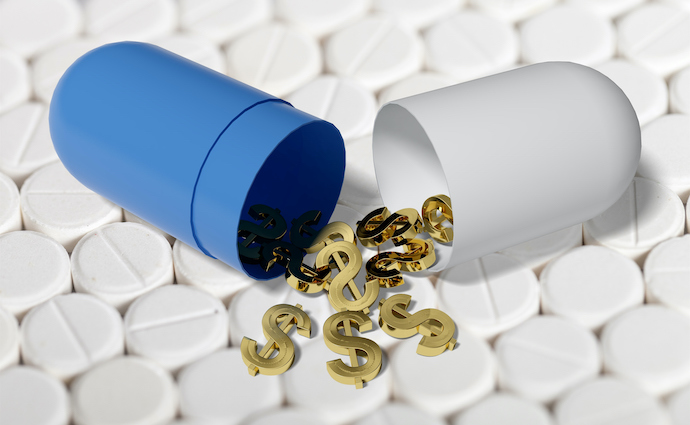Drug Wholesale Prices Impact Payer Spending, Out-of-pocket Costs
A report in JAMA shows drug wholesale list prices doubled from 2010-2016, which led to increases in payer spending and out-of-pocket costs for patients.

Source: Getty Images
- Increases in drug wholesale list prices have a trickle-down effect that negatively impacts patient financial responsibility, such as out-of-pocket costs, and payer spending, according to a study published in JAMA Network Open.
In recent years, the pharmaceutical industry has been scrutinized for increasing medication prices in a way that outpaces inflation. Pharmaceutical manufacturers have argued that the increase in prices are a direct result of increased rebates, not due to a rise in costs paid by patients or payers.
“As cost-related drug nonadherence is already widespread, rising drug prices raise concerns that patients will be unable to afford their prescriptions, leading to negative health outcomes,” the report authors wrote.
To determine the impact, the study analyzed a national sample of employer and commercial insurer pharmaceutical claims from 2010-2016, which included 14.4 million pharmacy claims made by 1.8 million patients.
The claims in the study included medications with the highest total drug expenditures by commercial insurers in 2014, including five patent-protected specialty medications and nine traditional brand-name medications.
The researchers concluded that median drug wholesale list price increased by 129 percent during the seven-year period.
While manufacturer discounts and rebates increased during the study period (4 percent and 2 percent, respectively), the medication price increases ultimately lead to a 64 percent increase in median insurance payments and a 53 percent increase in patient out-of-pocket costs.
Specialty medications saw a greater increase in payments by patients and insurers than non-specialty medications. After adjustment for inflation, median patient out-of-pocket costs for specialty medications increased by 85 percent, and patient financial responsibility for non-specialty medications increased by 42 percent during the study period.
“This observed rise in patient out-of-pocket costs with increasing drug list prices is of particular concern to clinicians because high drug costs can lead to poor drug regimen adherence, increased use of utilization management systems such as prior authorizations and step therapy, and adverse health outcomes,” the researchers explained.
“Although patients paid a smaller percentage of the wholesale list price over time, the absolute amount that they paid for the drugs we studied continued to increase at rates higher than general inflation or the growth of income, which may have important implications for the ever larger population of patients with chronic diseases. This study highlights that increases in prices for drugs that have been on the market for several years increase the cost of treatment for patients,” they continued.
During the same seven-year period, insurer payments increased by 116 percent for specialty medications and 28 percent for non-specialty medications.
Manufacturers of single-source specialty medications may offer fewer discounts and rebates because of little market competition. Therefore, insurer payments for specialty drugs are also rising at a much higher rate than payments for non-specialty medications, resulting in increases in coinsurance costs.
“Even though patient out-of-pocket costs are a smaller percentage of the total price of specialty medications than non-specialty medications, specialty drugs are still more costly to patients. As use of these drugs increases, the high costs may affect patients through higher out-of-pocket spending per prescription and rising premiums, as well as both government programs and commercial insurers,” the report detailed.
“Spending for specialty drugs has increased significantly over the past decade and is projected to contribute to rapidly increasing health care costs. Our results indicate that discounts and rebates for these drugs are lower relative to list prices than discounts and rebates for non-specialty medications,” the study concluded.
